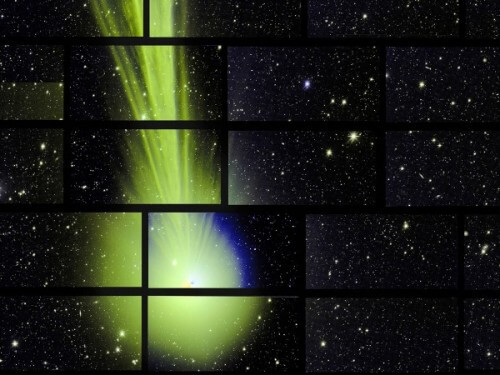A telescope commonly used to gather data on dark energy has discovered something interesting close to home. He photographed the comet that passed 82 million km from Earth in an image that swelled to about 570 million pixels

Adaptation: Gilat Simon
On December 27, 2014, a camera peering into deep space fortunately discovered an image of something much closer to home (compared to deep space...) - the comet Lovejoy, at a short distance of only 82 million kilometers from Earth in the direction of The stars Columba, which can be seen better from the northern and southern hemisphere (for comparison - during the last approach of Mars, the red planet was only 57 million kilometers from Earth).
The comet was officially named c/2014 Q2 when it was discovered in August, then renamed Lovejoy, after the Australian astronomer who discovered it. A comet made of ice takes several thousand years to orbit the sun.
The attached image is a photo collage, part of a 570 million pixel image obtained from 62 separate sensors on a telescope located high in the Andes in Chile, showing the comet about a month before it was closest to the Sun and is one of the best images taken of the cometary ice ball that has been discovered recently.
Each rectangle in the collage represents an area of the sky that is between a quarter and a fifth the size of a full moon. The nucleus of the comet is only 5 km long, which at the time the photo was taken, covered roughly the same amount of sky as a shekel coin at a distance of 300 km. The comet's head, a cloud of dust and gas ejected from the comet's icy core, is approximately 650,000 km long, according to researchers.
The colors of the comet are not as varied and lively as it appears in the picture. The patchwork of the collage is actually a false coloring of images taken at two certain wavelengths, of visible light and infrared. The camera that captured the images of the comet is normally used to collect data for scientists studying dark energy, a mysterious force that scientists hypothesize is accelerating the expansion of the universe.
